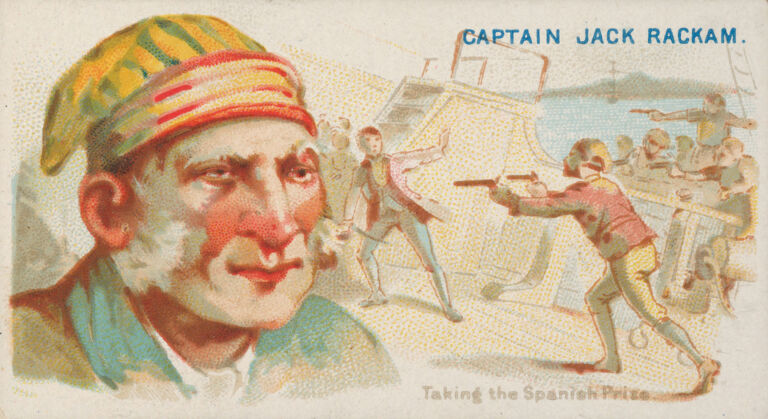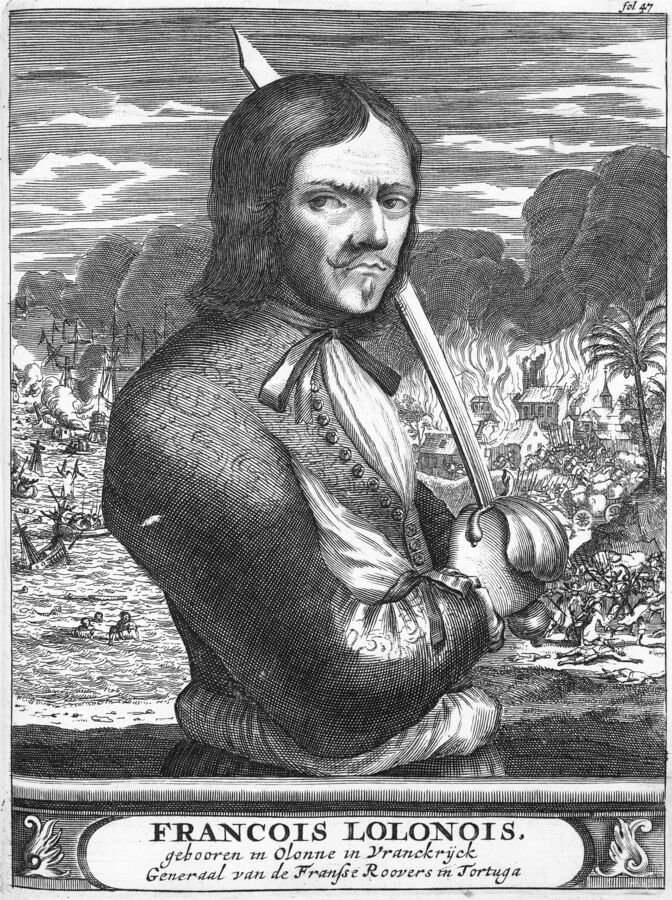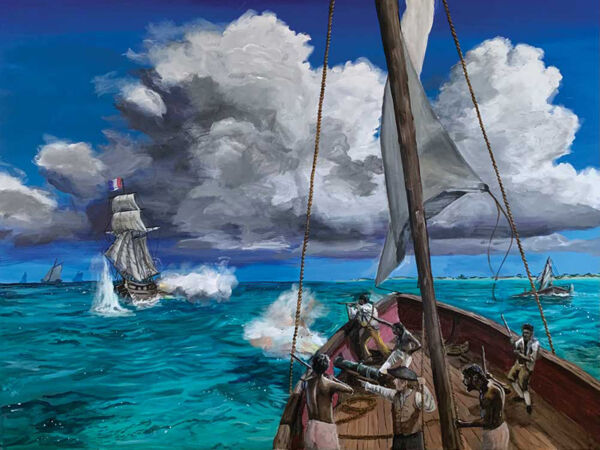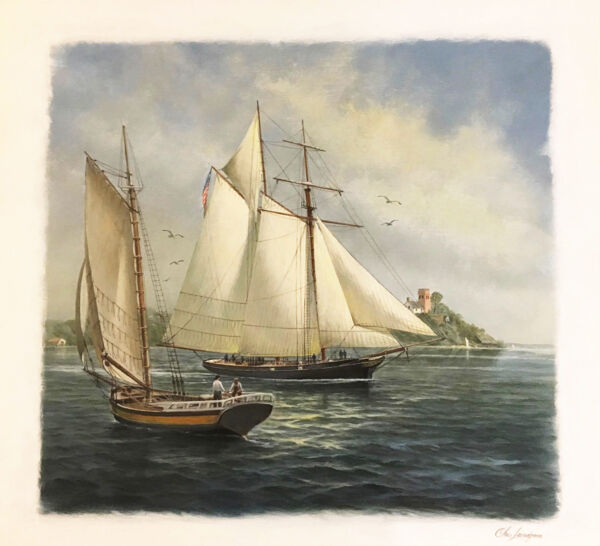A History of Pirates in the Turks and Caicos
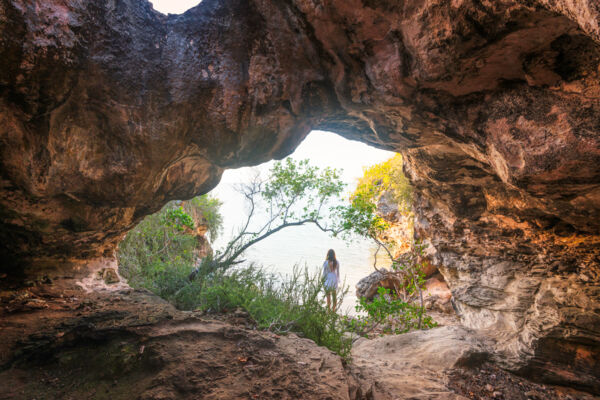
As a tropical Atlantic archipelago, the Turks and Caicos has historically had a past with pirates and privateers. One of the greatest remnants of piracy in the Turks and Caicos is in fact our country name, which basically translates to Pirate Islands, as it’s derived from the term Turks, which was a synonym for pirates in previous centuries, and cayo hico, a version of the indigenous Taino people’s name for an archipelago or island chain.
During much of the ‘golden age of piracy’, from about the mid-1600s to mid-1700s, pirates were known to have operated and had bases in the Turks and Caicos.
Separating Truth from Popular Culture
In media and popular culture, pirates are typically shown as having huge sailing ships with dozens of heavy cannons, riches, and well-organized crews. In reality, they often used small vessels (similar to the Caicos Sloop), were dirt poor, didn’t make much off the terror and mayhem they inflicted, and didn’t last long. Many also pursued piracy or privateering as a side occupation, often when their other seasonal focuses didn’t require attention.
In contrast to pirates, privateers often sailed much better vessels. Privateers (the Caribbean variants initially were often referred to as buccaneers) were commonly condoned by nations to operate against their enemies. Typically, in times of war, privateers were given ‘letters of marque’ to officiate their actions against vessels of certain flags.
The major powers in Europe in the 1700s, including England, France, Spain, the Netherlands, and Portugal, all encouraged privateering at various times during the many conflicts of the period. Privateers typically weren’t paid by the licensing state, yet profited from the captured cargo and vessels. They were also expected to follow guidelines on operation and the treatment of captured crews.
Often, pirates would have a practice of hiding in sheltering coastal areas where they could monitor normal sailing routes. They’d choose their prey carefully, and avoid any vessel that looked like it’d put up a tough fight.
As pirates often had a bit of double life, with the hope that they could return to civilization after making their fortune, some crews would show little mercy to reduce the risk of being outed. Consequently, the authorities and navies likewise showed little mercy to captured pirate crews.
Pirate ships and vessels were often in terrible condition as well. Maintaining a sailing ship required constant drudgery from the crew, something that pirates were typically not willing to do. Surprisingly often, pirates would often adopt captured vessels rather than maintain their own, as their original vessels would be in disrepair.
Famous Pirates That Operated in the Turks and Caicos
Pirates weren’t the best keepers of logs and accounts, so their exploits are not recorded with much detail, yet it’s known or suspected that a few famous pirates did operate in the Turks and Caicos.
As pirates that operated heavily in the Bahamas, Captain Charles Vane and Captain “Calico” Jack Rackam likely made it to the Turks and Caicos.
French Cay is likely named after Françoise L’Olonnois (also known as Jean-David Nau), who would hide at that cay, around West Caicos, and likely near southwest Providenciales.
Famous lady pirates Anne Bonny and Mary Read are said to have operated from Parrot Cay, yet there’s no solid evidence of the fact, which is likely a modern fable. They were part of Captain “Calico” Jack Rackam’s crew, so they may have visited the Turks and Caicos at some point, though.
Historical Sites Today
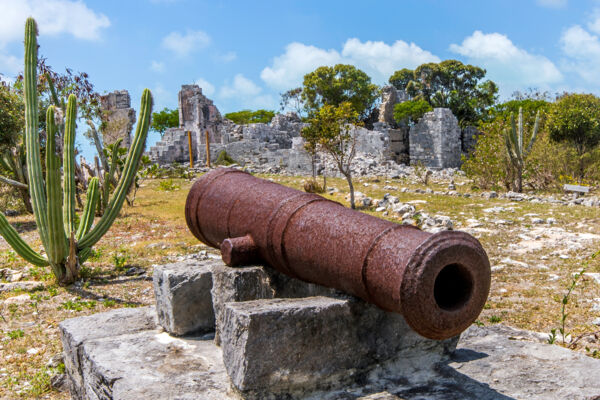
There are no officially recognized pirate shipwrecks or historical sites specifically of pirate origin, yet there are several interesting places that have somewhat of an associated past.
It’s very likely that pirates did in fact operate out of Parrot Cay, Pine Cay, Dellis Cay, and Fort George Cay due to the sources of relatively fresh water than can be found in small ponds. A common trait throughout human history is that areas of resources or shelter will be utilized by various groups over time. This is definitely seen with pre-Columbian Lucayan sites, as evidence of these indigenous peoples is often found at fishing sites, water accesses, and coastal areas that are popular today.
There are also records of pirates hiding at French Cay and on the southern side of West Caicos. Proximity also suggests that they may have operated out of the southwestern coast of Providenciales as well, as the complex networks of lagoons and channels would have been excellent for hiding small vessels.
Several historical and natural sites in the Turks and Caicos have likely derived their names from piracy, including French Cay (after Françoise L’Olonnois), likely Frenchman’s Creek, and the cays between Providenciales and North Caicos.
West Harbour Bluff and the Pirates Cave
The western side of Providenciales is naturally an excellent place to prey on vessels, as the high elevations offer a view over a surprisingly encompassing portion of the western Caicos Banks and western Turks and Caicos Barrier Reef, and the deep water route around it. As much of the coasts and bays of the western side of the archipelago are very treacherous with shallows and reefs, the ability to hide and escape pursuit was likely great.
A popular attraction today at West Harbour Bluff is Split Rock and the “Pirate Cave”. This site has historical and geological interest, yet is not known to directly be tied to piracy. Lucayan artifacts were found in the cave, and the popular rock inscriptions on the cliffs above were mostly from the post-Loyalist period, well after most piracy in the islands ended.
West Caicos
West Caicos was a point of contact for many early European explorers, including Captain John White. This was likely due to the ease of access to the island on the western coast, which offered deep yet sheltered water close to land (at what is now the West Caicos Marine National Park). As such, the area was conducive to piracy and waiting for passing ships.
Parrot Cay and Pine Cay
It’s said that Parrot Cay, a picturesque private island between Providenciales and North Caicos, derived its name from “Pirate Cay”, and this small cay and nearby Dellis Cay, Fort George Cay, and Pine Cay have been utilized by many different groups throughout history, primarily for the ease of access to brackish water ponds found near the northern coasts of the islands. It would have been very hard to find, access, and move fresh water from other natural sources in the Turks and Caicos.
These cays were almost certainly havens for pirates, as the surrounding channels and a few cuts in the barrier reef allowed access for mid-sized sailing vessels, and of course, drinkable water was a necessity.
Fort Saint George
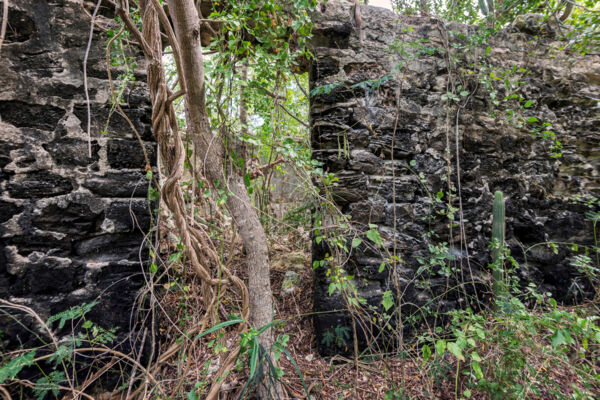
In the late 1700s, Fort George Cay was built by Loyalists in the Caicos Islands, primarily for defense against pirates and privateers. Control was later assumed by the British, and the fort at its heyday had a couple of hundred men and a significant artillery battery, which included some heavy cannons.
The fort defenses have since eroded away, yet seven cannons can still be seen in the very shallow water on the northern side of Fort George Cay.
Belleview Plantation
Belleview Plantation at Major Hill on North Caicos may have had defenses that were created with pirates in mind. Below the main houses and overlooking scenic Bottle Creek Lagoon, a significant rock bulwark that still stands today may have served as a defense against marauders.
The Northwest Point Wrecks
Two historical testaments to piracy in the Turks and Caicos are the wrecks of two U.S. Navy gunboats at the Northwest Point area off Providenciales.
The U.S.S Chippewa was a brig that started life hunting Barbary pirates and slavers in the Mediterranean, and sunk on the barrier reef in 1816.
The U.S.S. Onkahye schooner had a unique racing design, and wrecked in 1848 quite close to where the Chippewa went down.
Wreckers and Ship Salvagers
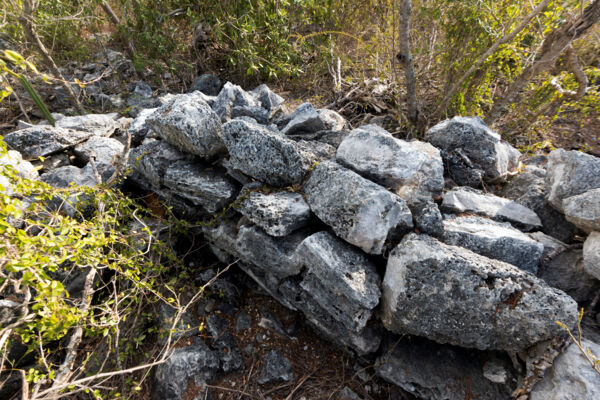
Ship salvaging, or wrecking as it was commonly known as, was one industry that took place in the Turks and Caicos, and likely contributed to the country’s poor initial reputation.
The Turks and Caicos is surrounded by complex and treacherous reefs and shoals, and consequently, many boats and ships have gone down in our waters. In fact, the first British Royal Mail ship to be lost at sea sank off of North Reef at Grand Turk.
Wrecking typically only salvaged vessels beyond recovery, yet reports and complaints of instances of wreckers luring ships onto reefs (using a lantern carried by a donkey on the beach to simulate a ship moving in safe waters, a tactic also deployed by wreckers on the Carolina Outer Banks), refusing to aid shipwrecked crew and passengers, and outright theft were made to governors in the Antilles and Caribbean.
It didn’t take many bad apples to ruin the barrel, and the wrecking industry, from the northeast United States to the Caribbean, generally had a bad reputation. The remains of a couple of overgrown wrecking sites still remain in the Turks and Caicos.

